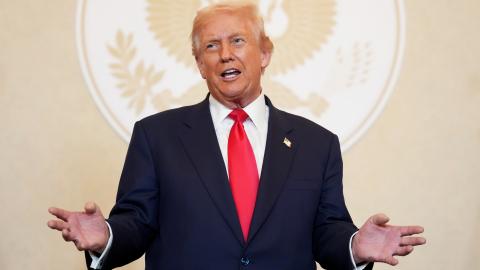This week, Representative Shigeru Ishiba was elected as the next leader of the Liberal Democratic Party (LDP), Japan’s largest political party. The LDP, with its coalition partners from the Komei Party (Komeito), holds a majority in both houses of Japan’s National Diet. Therefore, Ishiba will almost certainly become the prime minister of Japan on October 1.
After receiving the second most votes in the first round of voting among LDP members, Ishiba collected 215 votes in a runoff, 21 more than his opponent, Representative Sanae Takaichi.
If all goes as expected over the next week, Ishiba and the LDP will finish establishing a new leadership team. He will also establish his first cabinet, including ministers of foreign affairs, finance, and defense. Ishiba previously served as Japan’s minister of defense from 2007–2008.
Ishiba stated in his acceptance speech that he would assign the eight candidates who ran against him to key posts within the LDP or to cabinet positions.
Though not required to do so, Ishiba may soon take advantage of the LDP’s public support and call for an early general election in hopes that the LDP and Komeito can keep their majority in Japan’s lower house, the House of Representatives.
Ishiba’s Domestic and Foreign Policies
Ishiba has highlighted several key domestic and foreign issues that his administration would focus on.
Domestically, Ishiba sees overcoming deflation as Japan’s top priority. He wants to make wage growth outpace price growth, provide additional support for low-income individuals, and raise taxes on corporations. He plans to encourage companies to expand into underdeveloped regions and create jobs outside of Tokyo. He also believes in promoting geothermal and small-scale hydroelectric power generation to maximize energy conservation and availability.
On national security, one pillar of Ishiba’s platform is a new national security law that may increase the Japan Self-Defense Forces’ political importance. He also supports the creation of an Asian alliance similar to the North Atlantic Treaty Organization. The United States has security treaties with Japan, South Korea, the Philippines, and others in Asia. But these are bilateral agreements with the US, rather than agreements among Asian countries. He would also consider nuclear weapons sharing across this Asian NATO.
Finally, on foreign policy, Ishiba sees the US-Japan alliance as lopsided and wants Tokyo to be an “equal partner” to Washington. For example, he has suggested an agreement to allow the Japan Self-Defense Forces to station units in Guam in the same way that US forces have bases in Japan. Ishida would also like to bolster Japan’s strategic relationships with countries like the Philippines, India, France, and the United Kingdom. Finally, he envisions the continued strengthening of Japan’s multilateral and trilateral relationships, such as the QUAD (among the US, Japan, India, and Australia) or the US–Japan–South Korea relationship.
Ishiba has said that Ukraine today is Asia tomorrow, emphasizing that the threat Russia poses to Ukraine is similar to the threat the People’s Republic of China presents to Taiwan. Ishiba visited Taiwan in August and met with President William Lai.
Ishiba recently shared these and other thoughts on the future of Japan’s national security and foreign policy exclusively with Hudson in a memo titled “Japan’s New Security Era: The Future of Japan’s Foreign Policy.”
Looking Ahead
Ishiba’s move to the prime minister’s office comes at a turbulent time for Japan’s national security. Since Prime Minister Fumio Kishida announced he was stepping down, the PRC has escalated its already aggressive behavior toward Japan.
In late August, Chinese military aircraft violated Japanese airspace, and on September 18, a People’s Liberation Army aircraft carrier entered Japan’s contiguous waters. Russian and Chinese naval vessels have also been performing joint operations around Japan. Japan’s Ministry of Defense recently stated that the country faces the most severe and complex security environment since World War II.
Ishiba will not only inherit the challenges Prime Minister Kishida dealt with—the PRC and Russia—but also continue Japan’s efforts to modernize its military and integrate further with US forces in Japan. And after November, Ishiba will need to prepare to work closely with whichever administration will move into the White House in 2025.
This essay references comments Ishiba made before he was elected prime minister. These views are his personal opinion.




















